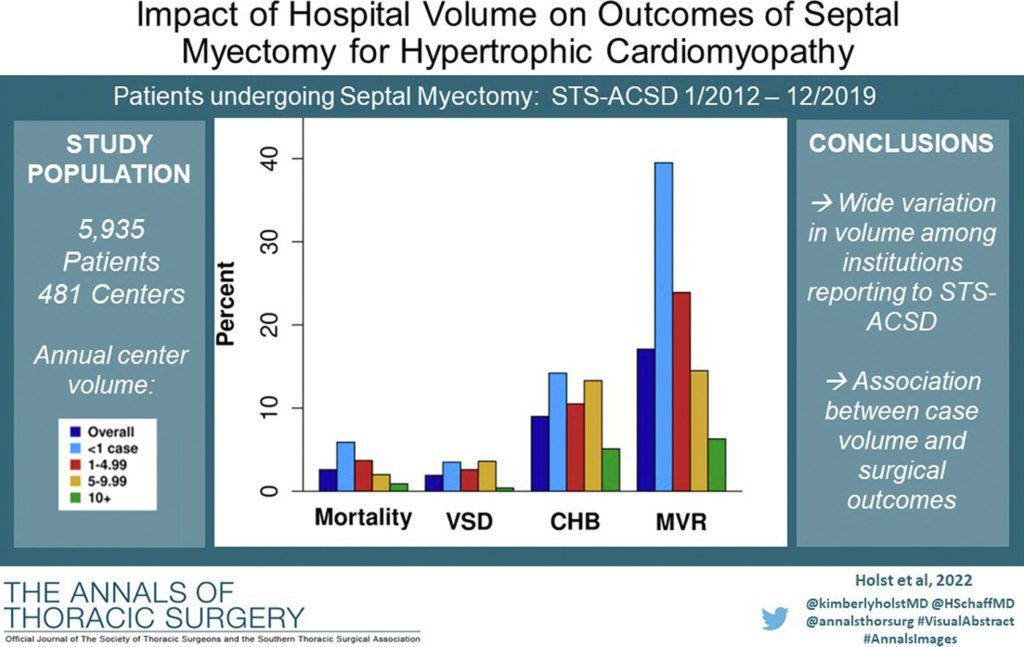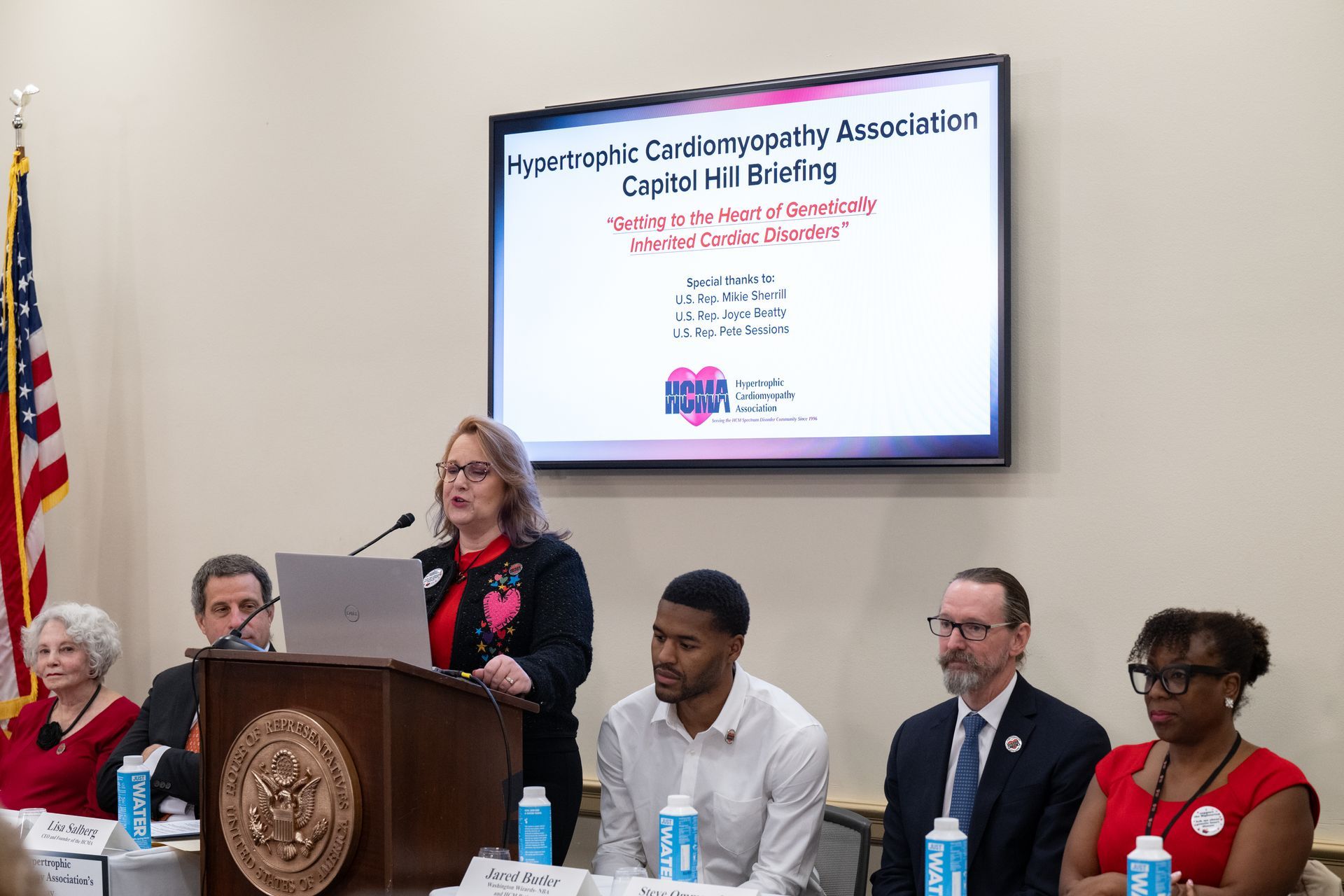
Large study of US myectomies
Myectomy is safest at high-volume centers. A study accepted in The Annals of Thoracic Surgery provides new evidence of this.
Kimberly A. Holst and her collaborators (2022) examined nearly 6,000 US myectomies reported from 2012 to 2019. Their data came from a database compiled by the Society of Thoracic Surgeons.
Mortality and post-operative risks lowest in high-volume centers
The researchers found that the chance of death was lowest in hospitals that performed more of the surgeries. But they also found that the risk of serious complications was much lower in these hospitals. The complications they studied included perforation of the interventricular septum and complete heart block.
Furthermore, those high-volume hospitals replaced mitral valves less often as part of the procedure.
Myectomy is safest in high-volume centers
These results strengthen the conclusions suggested by Kim et al. (2016) , that septal myectomy is safest at high-volume centers.
Literature cited
Holst, K. A., H. V. Schaff, N. G. Smedira, E. B. Habermann, C. N. Day, V. Badhwar, H. Takayama, P. M. McCarthy, and J. A. Dearani. 2022. Impact of Hospital Volume on Outcomes of Septal Myectomy for Hypertrophic Cardiomyopathy. The Annals of Thoracic Surgery , in press.
Kim, L. K., R. V. Swaminathan, P. Looser, R. M. Minutello, S. C. Wong, G. Bergman, S. S. Naidu, C. L. F. Gade, K. Charitakis, H. S. Singh, and D. N. Feldman. 2016. Hospital volume outcomes after septal myectomy and alcohol septal ablation for treatment of obstructive hypertrophic cardiomyopathy: US nationwide inpatient database, 2003-2011. J AMA Cardiology 1:324–332.
The post Training and Experience Count: Myectomy is Safest at High-Volume Centers appeared first on Hypertrophic Cardiomyopathy Association.
HCMA Blog


 Translate
Translate
